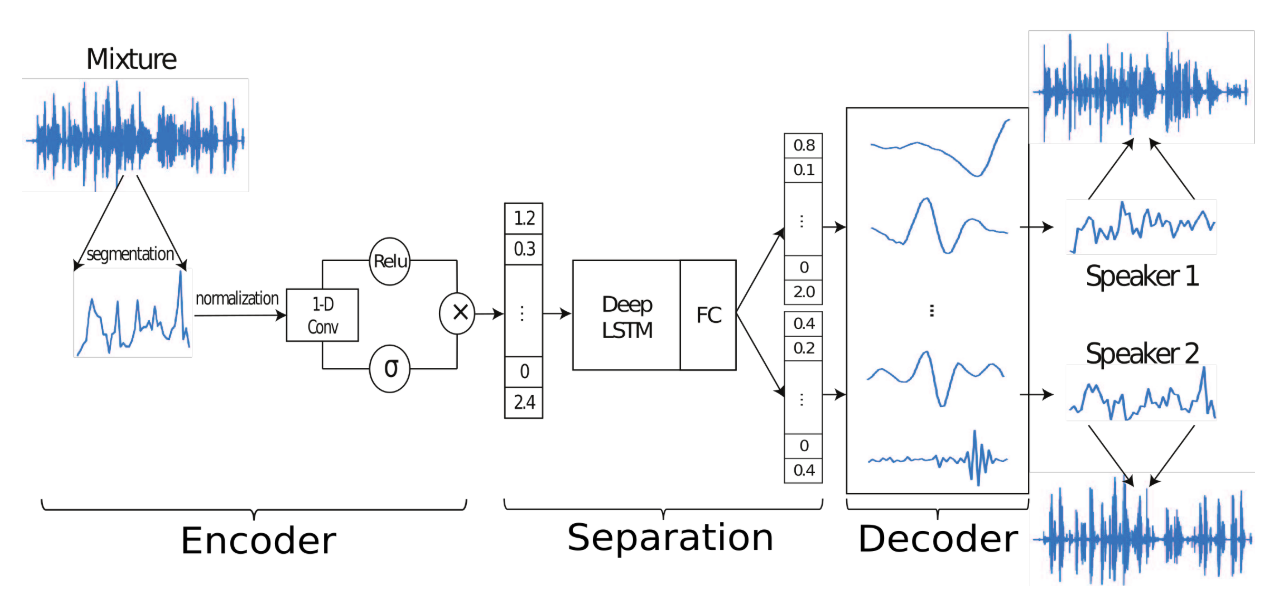Latent Alignment and Variational Attention
in Studies on Deep Learning, Deep Learning
WHY?
Even though attention is being widely used, it is hard to be considered as probabilistic model as the attention does not marginalize.
WHAT?
This paper formulated source separation task as getting mixture meight vector of multiple sources in wave form.
x(t) = \sum_{i=1}^C s_i(t)\\
x = wB\\
s_i = d_iB\\
w = \sum_{i=1}^C d_i = \sum_{i=1}^C w \odot (d_i \oslash w) := w \odot \sum_{i=1}^C m_i\\
d_i = m_i \odot wTime-domain Audio Separation Network(TasNet) tries to find m_i which is relative contribution to each w while B is N basis signals of shape N x L.

Encoder find w for B by appling 1-D gated convolution layer.
w_k = ReLU(x_k \circledast U)\odot\sigma(x_k\circledast V)\\Separation network uses LSTM and FC for masks(m_i) generation. With w and m found above, d can be found with decoder. The scale-invariant source-to-noise ratio(SI-SNR) is used for loss.
So?
 TasNet not only showed comparable performance in WSJ0-2mix dataset, but also showen to find its own basis.
TasNet not only showed comparable performance in WSJ0-2mix dataset, but also showen to find its own basis.
